
Homesteading year
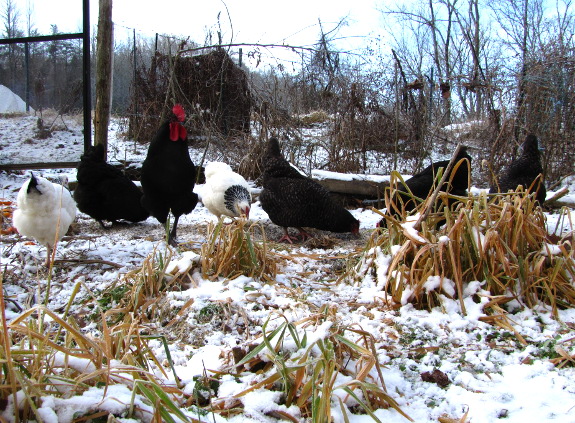 Every winter, I flip through
past planners to make sure I don't forget any seasonal tasks in the
coming year. This year, I decided to spend a little more time now
and save time later by summing up the main events in this post.
Maybe it will help you get your homestead year in order too!
Every winter, I flip through
past planners to make sure I don't forget any seasonal tasks in the
coming year. This year, I decided to spend a little more time now
and save time later by summing up the main events in this post.
Maybe it will help you get your homestead year in order too!
January:
Winter
- Order seeds.
- Taxes.
- Writing.
- Fun projects.
- Mark the year's projects on planner.
 February:
Frog month
February:
Frog month
- February 1 - start planting.
- Prune fruit trees and berries. Topdress those that didn't get deep bedding mulch this fall. Add mulch as needed.
- Rake mulch off asparagus beds at end of month.
- Cut logs for mushrooms and order spawn if expanding varieties.
- Grafting.
- Fix holes in pasture fences in preparation for chickens to be moved out of woods as grass begins to grow.
- Start saving eggs February 23 to go in incubator March 2.
Test heated brooder and clean outdoor brooder.
- Start cutting next year's firewood.
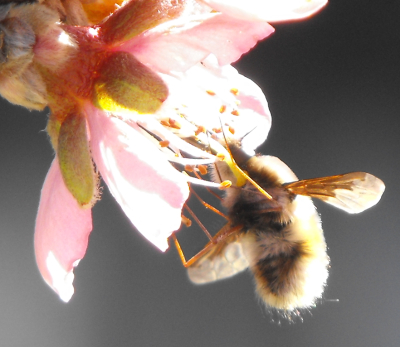 March:
Spring flowers
March:
Spring flowers
- Consider running laying flock under fruit trees this month to
kill bad bugs.
- Start serious garden prepping for spring --- weeding and topdressing. Continue planting from garden spreadsheet.
- Take quick hoops off fall crops.
- Check on worm bins.
- Inoculate mushroom logs.
- Chicks hatch March 23. Out on pasture in sunny spot ASAP.
- Wash incubator. Start saving eggs March 23 to go in incubator March 30.
- Consider adding another bee hive. If so, order or build
hive and find bee source.
- Take out bottom board and entrance reducers on bee hives.
Replace straw in quilt.
- Continue cutting next year's firewood.
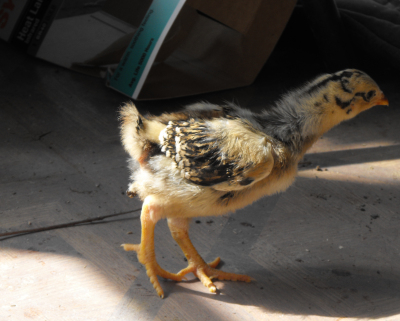 April:
Chick month
April:
Chick month
- Prepare May garden beds.
- Haul in extra manure.
- Clean up scattered debris in yard and begin mowing.
- Move first set of chicks to coop. Check pastures for holes.
- Install packages of bees if increasing apiary.
- Chicks hatch April 20. Out on pasture in shady spot ASAP.
- Wash winter bedding and extra clothes.
- Set up irrigation.
- Train miniature apples.
- Sweep chimneys.
- Golf cart battery maintenance.
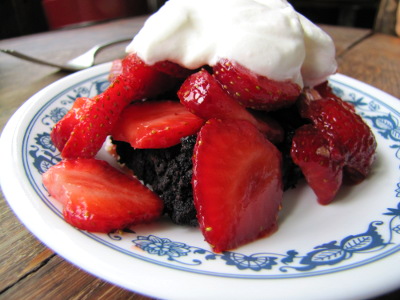 May:
Strawberry month
May:
Strawberry month
- Cut rye once blooming.
- Split bee hive(s).
- Major planting push.
- Mowing.
- Weed earliest spring crops.
- Plan summer and fall garden rotation. Order extra seeds.
- May 15 (or whenever last frost is obviously over) --- Uncover
figs and baby persimmons. Move citrus outside and topdress.
- Add new box to hive if necessary.
- Stake up overwintering kale (for seed) and asparagus.
- Train miniature apples.
- Continue winter laundry.
- Strawberry leather.
- Begin pruning and training tomatoes. (Weekly from now on.)
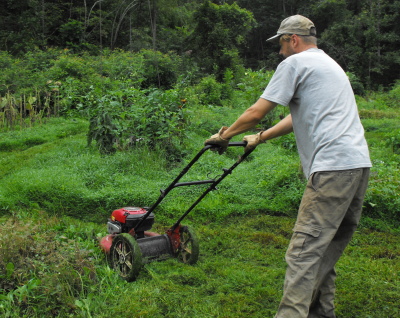 June:
Green month
June:
Green month
- Start picking cabbage worms and Japanese beetles.
- Harvest excess honey from last year.
- Strawberry leather.
- Harvest garlic.
- Harvest Eyptian onion top bulbs.
- Start freezing excess produce (broccoli).
- Contact straw source.
- Trellis cucumbers.
- Continue pruning and training tomatoes.
- Weed rest of spring crops.
- Mowing.
- Finish washing winter bedding and clothes.
- Car inspection.
- Start harvesting blueberries.
- Continue planting.
- Fertilize, mulch, and weed small perennials (strawberries, asparagus, rhubarb, Egyptian onions).
- Top off mulch around larger perennials and weed (or kill mulch)
as necessary.
- Finish getting this winter's wood under cover.
- Process chickens third week of June.
- Train miniature apples.
- Summer prune perennials.
- Harvest kale seeds.
- Add new box to hive if necessary.
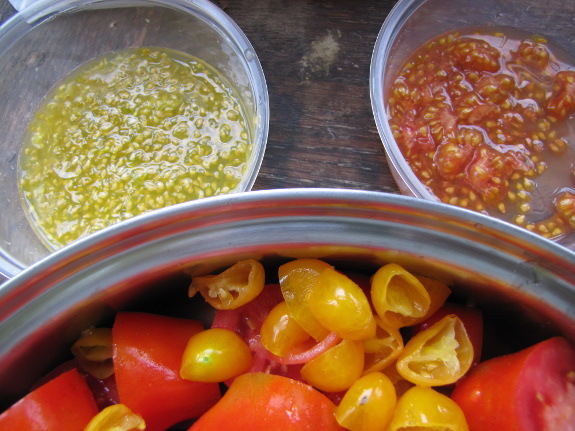 July: Dog
days
July: Dog
days
- Continue picking cabbage worms and Japanese beetles.
- Continue freezine excess produce.
- Continue pruning and training tomatoes.
- Trellis more cucumbers.
- Start saving eggs July 13 to go in incubator July 20.
- Harvest poppy seeds, arugula seeds, and tokyo bekana seeds.
- Continue planting.
- Weed and mulch garden.
- Mowing.
- Save seeds (tomatoes, etc.)
- Continue pinching perennials (blackberries, black raspberries,
kiwi).
- Bring in garlic from drying racks.
- Harvest onions and carrots.
- Haul trash to dump.
- Finish mulching larger perennials.
- Refill worm bins with manure.
- Process chickens third week of July.
- Train miniature apples.
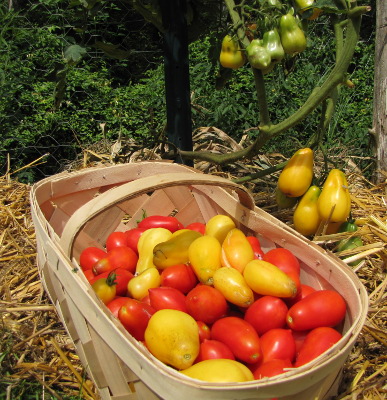 August:
Tomato month
August:
Tomato month
- Continue picking Japanese beetles.
- Continue freezine excess produce.
- Continue pruning and training tomatoes.
- Chicks hatch August 10.
- Harvest mung beans.
- Bring in onions from drying racks.
- Mowing.
- Weeding, planting, mulching.
- Train miniature apples.
- Replace straw in Warre hive quilt.
- Dig up large weeds (ragweed, etc.) before they go to seed,
especially in pastures.
- Start harvesting butternuts.
- Wash and put away incubator.
September:
Soup month
- Continue freezine excess produce (including lots of soup).
Dry extra tomatoes and make ketchup.
- Continue pruning and training tomatoes.
- Tie up berries.
- Hive check and varroa mite count. Feed bees if low on
winter stores.
- Harvest mung beans, sweet potatoes, and butternuts.
- Install light in chicken coop.
- Mowing.
- Weeding, planting, mulching.
- Train miniature apples.
- Process old hens as young ones start to lay.
- Put away sweet potatoes and butternuts.
- Close up screen door for winter.
- Haul in more sawdust for composting toilet.
- Put away seeds.
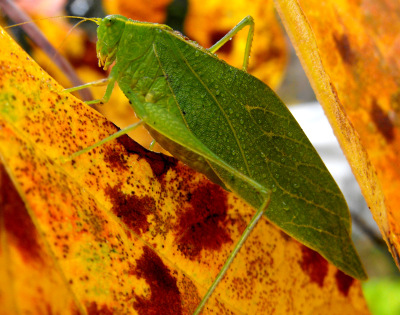 October:
First frost
October:
First frost
- Order new perennials for November and December planting.
- Continue feeding bees, if necessary.
- Mowing.
- Weeding, planting, mulching.
- Train miniature apples.
- Staycation.
- Move citrus inside.
- Harvest potatoes and cabbage.
- Start putting garden to bed.
- Rake leaves out of the woods.
- Cut tops off asparagus.
- Move chicks to coop and clean out brooder.
- Change to new side of composting toilet.
- Kill mulch new garden areas for next year.
November:
Fall
- Contact straw source.
- Rake leaves out of the woods.
- Process broilers first week.
- Dig carrots.
- Frost protect figs.
- Finish putting garden to bed.
- Put up quick hoops.
- Winterize - put away five gallon buckets, drain hoses, run
lawnmower and weedeater dry, put heated waterer in coop,
weather-stripping, plug in light in fridge root cellar.
- Install bottom board and entrance reducers in bee hives.
- Hunting season --- kill deer.
- Divide nonwoody perennials. Harvest echinacea roots.
- Mulch perennials.
- Plant new trees and shrubs.
- Plan garden rotation.
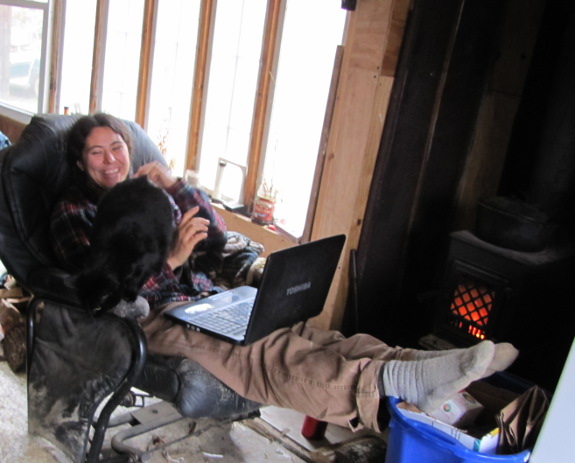
December:
Resting month
- Finish anything leftover from November.
- Soil test.
- Writing.
- Fun projects.
If you're a type-A list
maker like me, you might also like to download this
year's planting calendar. I hope it helps keep
you on track!
Our chicken waterer makes it easy to raise three
rounds of broilers plus our laying hens, mixed in with honeybees, a
vegetable garden, and an orchard.
Want more in-depth information? Browse through our books.
Or explore more posts by date or by subject.
About us: Anna Hess and Mark Hamilton spent over a decade living self-sufficiently in the mountains of Virginia before moving north to start over from scratch in the foothills of Ohio. They've experimented with permaculture, no-till gardening, trailersteading, home-based microbusinesses and much more, writing about their adventures in both blogs and books.
Want to be notified when new comments are posted on this page? Click on the RSS button after you add a comment to subscribe to the comment feed, or simply check the box beside "email replies to me" while writing your comment.

When you see it all listed out like this it does not look so bad.
I believe I read you got deer 4.0 in the fall. I also read you got two in the same year, was that 2011? I'll be honest, I don't think I could be my own butcher.
How many can you bag in a season? For the life of me I cannot understand why you cannot harvest those on your land that are harvesting your crops.
What do you do with the remains/bones? Do you use the hides?
Are they as invasive in the winter when food is scarce?
Gerry --- If you poke back through our archives (or type "deer" in the search box on the sidebar), you'll find lots of information on deer. The short answer is that our area is severely overpopulated but we only shoot the ones that make it through our significant defenses and end up in the yard, which has averaged out to about one a year. If I actually tried to shoot from outside the trailer, I'm sure we'd get more.
I definitely recommend killing a few chickens before trying to butcher your own deer, but, pound per pound, deer are really easier.
We've just buried the entrails and hide so far. We make stock out of the bones and then give the bones to Lucy.
You use the trailer as a blind! Strangers take note!
I don't think I could get past cleaning fish. I'm a meat and potatoes guy, but having to butcher for myself might make me vegan. I have “read” many of the deer posts,and many of the comments. I think that is what hooked me on your blog. That is a lot more real than this wannabe could handle.
I thought you might have composted the entrails, and how that worked would be very interesting. When you read the permies message boards you hear about various animals and compost piles.
BTW, what is the date “2011-11-26” in the life of this blog?
Sometimes I am really dumb and I am woman enough to admit it. I have been planning on ordering more chicks this year and didn't even consider buying a brooder and hatching eggs from my current flock...
I am so glad you listed this, saving eggs for brooder, as one of your tasks for February 2015.